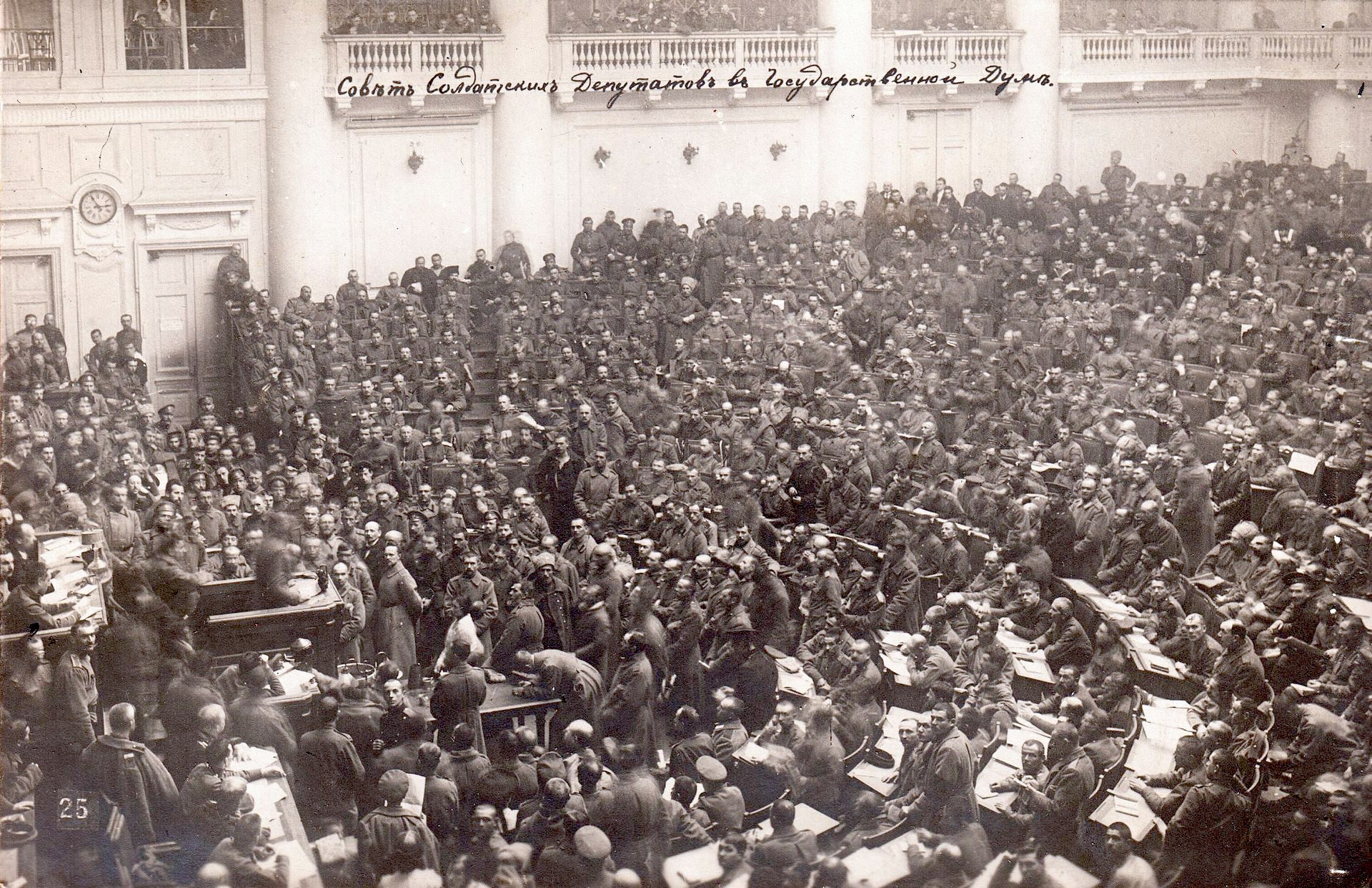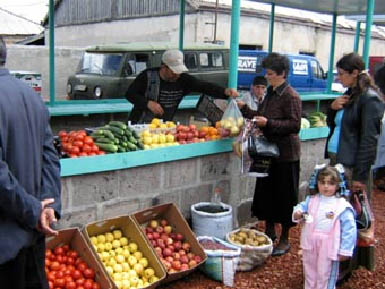|
Religion In Georgia (country)
Christianity is the predominant religion in Georgia. The wide variety of peoples inhabiting Georgia has meant a correspondingly rich array of active religions in the country. Overview The most recent census in 2014 showed that most of the population in Georgia practiced Eastern Orthodox Christianity, primarily in the Georgian Orthodox Church, whose faithful make up 83.4% of the population. Around 2.9% of the population followed the Armenian Apostolic Church (Oriental Orthodoxy), almost all of which are ethnic Armenians. Adherents of Islam made up 10.7% of the population and are mainly found in the Adjara and Kvemo Kartli regions and as a sizeable minority in Tbilisi. Catholics of the Armenian and Latin churches made up around 0.8% of the population and were mainly found in the south of Georgia and a small number in Tbilisi. Protestants also made up less than 1%. There was also a sizeable Jewish community in Tbilisi served by two synagogues. The Georgian Apostolic Autocephal ... [...More Info...] [...Related Items...] OR: [Wikipedia] [Google] [Baidu] |
Georgian Orthodox Church
The Apostolic Autocephalous Orthodox Church of Georgia ( ka, საქართველოს სამოციქულო ავტოკეფალური მართლმადიდებელი ეკლესია, tr), commonly known as the Georgian Orthodox Church or the Orthodox Church of Georgia, is an autocephaly, autocephalous Eastern Orthodox Church, Eastern Orthodox church in full communion with the other churches of Eastern Orthodoxy. It is Georgia (country), Georgia's dominant religious institution, and a majority of Georgian people are members. The Orthodox Church of Georgia is one of the oldest churches in the world. It asserts Apostles in the New Testament, apostolic foundation, and that its historical roots can be traced to the early and late Christianization of Iberia and Colchis by Andrew the Apostle in the 1st century AD and by Saint Nino in the 4th century AD, respectively. As in similar autocephalous Eastern Orthodox Christian churches, the chu ... [...More Info...] [...Related Items...] OR: [Wikipedia] [Google] [Baidu] |
Old Believers
Old Believers or Old Ritualists ( Russian: староверы, ''starovery'' or старообрядцы, ''staroobryadtsy'') is the common term for several religious groups, which maintain the old liturgical and ritual practices of the Russian Orthodox Church, as they were before the reforms of Patriarch Nikon of Moscow between 1652 and 1657. The old rite and its followers were anathematized in 1667, and Old Belief gradually emerged from the resulting schism. The antecedents of the movement regarded the reform as heralding the End of Days, and the Russian church and state as servants of the Antichrist. Fleeing persecution by the government, they settled in remote areas or escaped to the neighboring countries. Their communities were marked by strict morals and religious devotion, including various taboos meant to separate them from the outer world. They rejected the Westernization measures of Peter the Great, preserving traditional Russian culture, like long beards for men. ... [...More Info...] [...Related Items...] OR: [Wikipedia] [Google] [Baidu] |
Perestroika
''Perestroika'' ( ; rus, перестройка, r=perestrojka, p=pʲɪrʲɪˈstrojkə, a=ru-perestroika.ogg, links=no) was a political reform movement within the Communist Party of the Soviet Union (CPSU) during the late 1980s, widely associated with CPSU general secretary Mikhail Gorbachev and his '' glasnost'' (meaning "transparency") policy reform. The literal meaning of ''perestroika'' is "restructuring," referring to the restructuring of the political economy of the Soviet Union in an attempt to end the Era of Stagnation. ''Perestroika'' allowed more independent actions from various ministries and introduced many market-like reforms. The purported goal of ''perestroika'' was not to end the planned economy, but rather to make socialism work more efficiently to better meet the needs of Soviet citizens by adopting elements of liberal economics. The process of implementing ''perestroika'' added to existing shortage and created political, social, and economic tensions wi ... [...More Info...] [...Related Items...] OR: [Wikipedia] [Google] [Baidu] |
Abkhazia
Abkhazia, officially the Republic of Abkhazia, is a List of states with limited recognition, partially recognised state in the South Caucasus, on the eastern coast of the Black Sea, at the intersection of Eastern Europe and West Asia. It covers and has a population of around 245,000. Its capital and largest city is Sukhumi. The political status of Abkhazia is a central issue of the Abkhazia conflict and Georgia–Russia relations. Abkhazia has been International recognition of Abkhazia and South Ossetia, recognised as an independent state only by 5 states: Russia, Venezuela, Nicaragua, Nauru, and Syria. Georgia (country), Georgia and other countries consider Abkhazia as a Georgia's sovereign territory.Olga Oliker, Thomas S. Szayna. Faultlines of Conflict in Central Asia and the South Caucasus: Implications for the U.S. Army. Rand Corporation, 2003, .Emmanuel Karagiannis. Energy and Security in the Caucasus. Routledge, 2002. . Lacking effective control over the Abkhazian territ ... [...More Info...] [...Related Items...] OR: [Wikipedia] [Google] [Baidu] |
Azerbaijan
Azerbaijan, officially the Republic of Azerbaijan, is a Boundaries between the continents, transcontinental and landlocked country at the boundary of West Asia and Eastern Europe. It is a part of the South Caucasus region and is bounded by the Caspian Sea to the east, Russia's republic of Dagestan to the north, Georgia (country), Georgia to the northwest, Armenia and Turkey to the west, and Iran to the south. Baku is the capital and largest city. The territory of what is now Azerbaijan was ruled first by Caucasian Albania and later by various Persian empires. Until the 19th century, it remained part of Qajar Iran, but the Russo-Persian wars of Russo-Persian War (1804–1813), 1804–1813 and Russo-Persian War (1826–1828), 1826–1828 forced the Qajar Empire to cede its Caucasian territories to the Russian Empire; the treaties of Treaty of Gulistan, Gulistan in 1813 and Treaty of Turkmenchay, Turkmenchay in 1828 defined the border between Russia and Iran. The region north o ... [...More Info...] [...Related Items...] OR: [Wikipedia] [Google] [Baidu] |
Armenia
Armenia, officially the Republic of Armenia, is a landlocked country in the Armenian Highlands of West Asia. It is a part of the Caucasus region and is bordered by Turkey to the west, Georgia (country), Georgia to the north and Azerbaijan to the east, and Iran and the Azerbaijani exclave of Nakhchivan Autonomous Republic, Nakhchivan to the south. Yerevan is the Capital city, capital, largest city and Economy of Armenia, financial center. The Armenian Highlands has been home to the Hayasa-Azzi, Shupria and Nairi. By at least 600 BC, an archaic form of Proto-Armenian language, Proto-Armenian, an Indo-European languages, Indo-European language, had diffused into the Armenian Highlands.Robert Drews (2017). ''Militarism and the Indo-Europeanizing of Europe''. Routledge. . p. 228: "The vernacular of the Great Kingdom of Biainili was quite certainly Armenian. The Armenian language was obviously the region's vernacular in the fifth century BC, when Persian commanders and Greek writers ... [...More Info...] [...Related Items...] OR: [Wikipedia] [Google] [Baidu] |
Judaism
Judaism () is an Abrahamic religions, Abrahamic, Monotheism, monotheistic, ethnic religion that comprises the collective spiritual, cultural, and legal traditions of the Jews, Jewish people. Religious Jews regard Judaism as their means of observing the Mosaic covenant, which they believe was established between God in Judaism, God and the Jewish people. The religion is considered one of the earliest monotheistic religions. Jewish religious doctrine encompasses a wide body of texts, practices, theological positions, and forms of organization. Among Judaism's core texts is the Torah—the first five books of the Hebrew Bible—and a collection of ancient Hebrew scriptures. The Tanakh, known in English as the Hebrew Bible, has the same books as Protestant Christianity's Old Testament, with some differences in order and content. In addition to the original written scripture, the supplemental Oral Torah is represented by later texts, such as the Midrash and the Talmud. The Hebrew ... [...More Info...] [...Related Items...] OR: [Wikipedia] [Google] [Baidu] |
Ilia II
Ilia may refer to: Science and medicine *''Apatura ilia'' or lesser purple emperor, a butterfly *Ilium (bone) (plural: "ilia"), pelvic bone People * Ilia (name), numerous ** Ilia II, the current Catholicos-Patriarch of All Georgia Places * Ilia, Hunedoara, Romania * Elis (regional unit), Greece * Elis Province, Greece Arts and literature *Ilia, a character in '' Idomeneo'', an opera by Mozart *Ilia (The Legend of Zelda), a character in the video game ''The Legend of Zelda: Twilight Princess'' * Ilia (''Star Trek''), a character in ''Star Trek: The Motion Picture'' *Ilia, a nation of the continent Elibe from the ''Fire Emblem'' series *Ilia the Righteous, a prominent figure of new Georgian literature *Rhea Silvia or Ilia, the mother of Romulus and Remus in Roman mythology Other *Illinois Institute of Art – Chicago, a nonprofit institution *Ilia (band), a rock band *Arturo Umberto Illia (1900–1983), former president of Argentina See also *Elia (other) *Ilija (disa ... [...More Info...] [...Related Items...] OR: [Wikipedia] [Google] [Baidu] |
Catholicos-Patriarch Of All Georgia
Catholicos-Patriarch of All Georgia ( ka, სრულიად საქართველოს კათოლიკოს პატრიარქი) is the Archbishop of Mtskheta and Tbilisi and the head of Georgian Orthodox Church. The official full title is ''His Holiness and Beatitude, Catholicos-Patriarch of All Georgia and the Archbishop of Mtskheta and Tbilisi''. The incumbent Catholicos-Patriarch of the church is Patriarch Ilia II since 1977, who is also the Metropolitan Bishop of Bichvinta and Tskhum-Abkhazia. ''Catholicos-Patriarch'' has been the title of the heads of the Georgian Orthodox Church since 1010, shortly after the unification of the Kingdom of Georgia. The first Catholicos-Patriarch of All Georgia was Melkisedek I (1010–1033). In the 15th century, with the collapse of the Kingdom, the Georgian Orthodox Church was divided into the East and the West parts and accordingly they were ruled by the ''Catholicos-Patriarch of East Georgia'' and the ''Cat ... [...More Info...] [...Related Items...] OR: [Wikipedia] [Google] [Baidu] |
Soviet (council)
A soviet (, , ) is a workers' council that follows a socialist ideology, particularly in the context of the Russian Revolution. Soviets were the main form of government in the Russian SFSR and the Makhnovshchina. The first soviets were established during the 1905 Revolution in the late Russian Empire. In 1917, following the February Revolution, a state of dual power emerged between the Russian Provisional Government and the soviets. This ended later that year with the October Revolution, during which the Second Congress of Soviets proclaimed itself as the supreme governing body of the country. Because soviets gave the name to the later Soviet Union, they are frequently associated with the state's establishment. However, the term may also refer to any workers' council that is socialist, such as the Irish soviets. Soviets do not inherently need to adhere to the ideology of the Soviet Union. Etymology "Soviet" is derived from a Russian word meaning council, assembly, advice, har ... [...More Info...] [...Related Items...] OR: [Wikipedia] [Google] [Baidu] |
Ninotsminda
Ninotsminda ( Georgian: ნინოწმინდა ; Armenian: Նինոծմինդա) is a town and a center of the Ninotsminda Municipality located in Georgia's southern district of Samtskhe-Javakheti. According to the 2014 census the town has a population of 5,144. The vast majority of the population are Armenians. History Translation of the current official name of the settlement means "Saint Nino" in English and it was given to the town in honor of the illuminator of Georgians St. Nino, in 1991. During the Ottoman rule, this was a sanjak of Çıldır Eyaleti, called Altunkale, which means "golden castle" in Turkish. Before 1991, the town of Ninotsminda was called Bogdanovka () - a name going back to the history of the Doukhobor settlement in the region in the 1840s.Hedwig Lohm, "Dukhobors in Georgia: A Study of the Issue of Land Ownership and Inter-Ethnic Relations in Ninotsminda rayon (Samtskhe-Javakheti)". November 2006. Available iEnglish anRussian After the conq ... [...More Info...] [...Related Items...] OR: [Wikipedia] [Google] [Baidu] |




